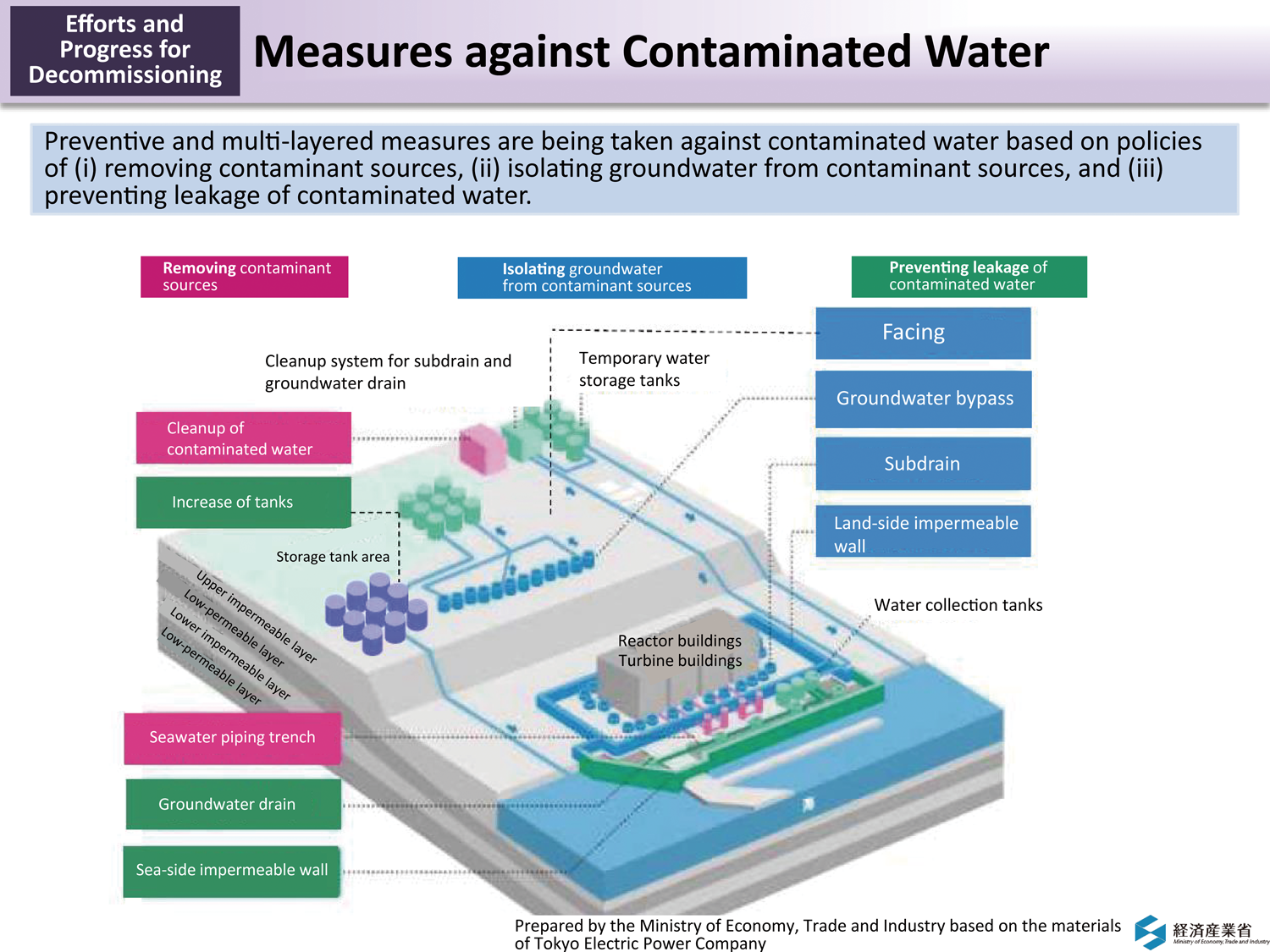Measures against Contaminated Water
Water contaminated with radioactive materials has been treated based on the following three policies.
< Policy 1: Removing contaminant sources >
(i) Clean up contaminated water by removing 62 types of radionuclides therefrom
(ii) Remove highly contaminated water that remains in the trench, etc.
< Policy 2: Isolating water from contaminant sources >
(i) Pump up groundwater on the mountain side of the buildings to suppress inflow of groundwater around the buildings
(ii) Pump up groundwater using the well near the buildings (subdrain) to lower the groundwater level, thereby suppressing inflow of groundwater into the buildings
(iii) Construct a frozen soil wall around the buildings to suppress inflow of groundwater into the buildings
(iv) Suppress infiltration of rainwater into soil by paving the surface (facing)
< Policy 3: Preventing leakage of contaminated water >
(i) Construct a sea-side impermeable wall made of steel pipes to reduce outflow of groundwater containing radioactive materials into the sea
(ii) Construct a groundwater drain in the area between the sea-side impermeable wall and the land-side impermeable wall and pump up groundwater to suppress outflow of groundwater into the sea
(iii) Secure tanks in a planned manner to store highly contaminated water and decontaminated water newly generated every day
These efforts have brought about the following outcomes:
* The amount of newly generated contaminated water decreased from approx. 540 m3/day in May 2014 to approx. 140 m3/day in 2020, and the goal of approx. 150 m3/day set in the Mid- and Long-term Roadmap has been achieved.
* Treatment of the accumulated water in the buildings, except for reactor buildings, etc. for Unit 1 to Unit 3, was completed and the goal set in the Mid- and Long-term Roadmap has been achieved.
* Concentrations of radioactive materials in the port decreased significantly.
As a remaining challenge, the amount of the decontaminated water that still contains tritium is increasing in storage tanks, and some countermeasures are being required.
- Included in this reference material on February 28, 2018
- Updated on March 31, 2021

